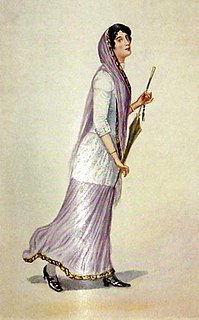
Parsis or Parsees, are an ethnoreligious group who migrated to the Indian subcontinent from Persia during the Muslim conquest of Persia of 633–654 CE; one of two such groups to have done so, with the other being Iranis. Zoroastrianism is the ethnic religion of the Parsi people. According to the Qissa-i Sanjan, Parsis migrated from the Sasanian Empire to Gujarat, where they were given refuge between the 8th and 10th centuries CE to escape persecution following the Muslim conquests.

A temple is a building reserved for religious or spiritual rituals and activities such as prayer and sacrifice. The term typically used for such buildings belonging to all faiths where a more specific term such as church, mosque or synagogue is not generally used in English. These include Hinduism, Buddhism, Sikhism and Jainism among religions with many modern followers, as well as other ancient religions such as Ancient Egyptian religion.
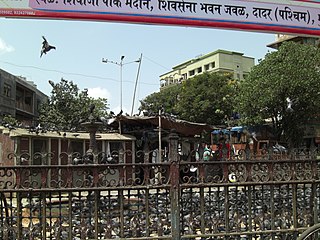
Dadar is the first planned area of Mumbai. It is a densely populated residential and shopping neighbourhood. It is also a prominent railway and bus service hub with local and national connectivity. Dadar is also a hub for the Marathi culture in Mumbai.
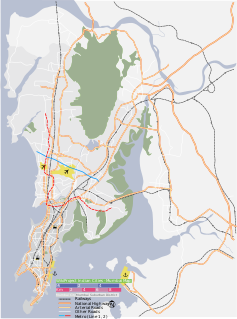
Mazagaon, also spelled Mazgaon and Mazagon, and pronounced by the Catholics as 'Mazgon' or 'Maz-a-gon' and the Marathi-speakers as Mazhgav. It is one of the seven islands of Mumbai. It is part of South Mumbai and can be reached by Byculla Station on the Central railway line and Dockyard Road Station on the Harbour Railway line. Located in Mazagaon are maritime companies like the Bombay Port Trust and Mazagaon Dock Ltd., the Mazagaon Court and Anglo-Indian schools including Rosary High School, St. Peters School, Antonio D'Souza High School, Diamond Jubilee High School and St. Mary's School.

The History of Mumbai, can be traced back to 600 BC, when evidences of the first known settlement,Harrappan Civilization, here have been discovered.

A fire temple, Agiary, Atashkadeh, Atashgah (آتشگاه) or Dar-e Mehr is the place of worship for the followers of Zoroastrianism, the ancient religion of Iran (Persia). In the Zoroastrian religion, fire, together with clean water, are agents of ritual purity. Clean, white "ash for the purification ceremonies [is] regarded as the basis of ritual life", which "are essentially the rites proper to the tending of a domestic fire, for the temple [fire] is that of the hearth fire raised to a new solemnity". For, one "who sacrifices unto fire with fuel in his hand ..., is given happiness".
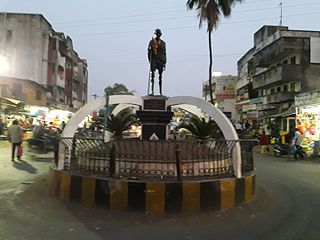
Navsari is a city, the ninth biggest municipality of Gujarat and the administrative headquarters Navsari District of Gujarat, India, located between Surat & Mumbai. Navsari is also the Twin City of Surat, and only 37 km south of Surat. In 2016, Navsari ranked as the 16th biggest city of Gujarat state of India by population in 2011. It used to rank 10th in 1991 to 2001. Navsari is the 25th "cleanest city of India" according to the Indian Ministry of Urban Development. Navsari is also a famous place due to the great Satyagraha march led by Mahatma Gandhi till the dandi.

The Baku Ateshgah, often called the "Fire Temple of Baku" is a castle-like religious temple in Surakhani town, a suburb in Baku, Azerbaijan.
Zoroastrianism in Azerbaijan goes back to the first millennium BC.or earlier and was the predominant religion of Greater Iran before the conversion to Islam.
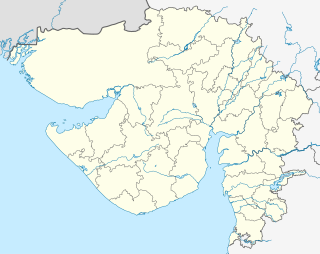
Udvada is a town situated in Pardi taluka in the Valsad district in the state of Gujarat, India. Udvada is a coastal town located around 24 km from the Valsad city. The Zoroastrian temple, Udvada Atash Behram is situated here.

Persecution of Zoroastrians is the religious persecution inflicted upon the followers of the Zoroastrian faith. The persecution of Zoroastrians occurred throughout the religion's history. The discrimination and harassment began in the form of sparse violence and forced conversions. Muslims are recorded to have destroyed fire temples. Zoroastrians living under Muslim rule were required to pay a tax called jizya.

Dadabhai Naoroji Road (D.N.Road), a North–South commercial artery road, in the Fort business district in South Mumbai of Maharashtra, India, is the nerve centre of the city, starting from the Crawford Market, linking Chhatrapati Shivaji Maharaj Terminus, leads to the Flora Fountain at the southern end of the road. This entire stretch of the road is studded with Neo–Classical and Gothic Revival buildings and parks built in the 19th century, intermingled with modern office buildings and commercial establishments.

The Tarikhaneh Temple, also called the Tarikhaneh Mosque, is a Sassanid-era monument located on the southern limit of the present day city of Damghan, Iran.

Grant Road is a locality in South Mumbai. Grant Road railway station serves this area.
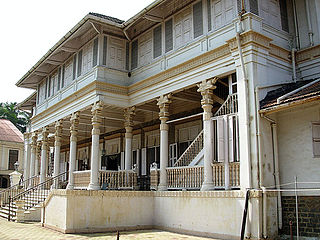
The Iranshah Atash Behram, also known as the Iranshahr, or Udwada Atash Behram is a sacred fire housed in a temple in Udvada, Gujarat on the west coast of India. It is the first of the eight fire temples of the Zoroastrian religion in the country. The Atash Bahram, meaning "Victorious Fire", is the oldest fire temple in India, dated to the eighth century, and represents the historical cultural and religious links with Iran. The current temple housing the sacred fire was built in 1742 by Motlibai Wadia from Bombay. The temple structure, built spaciously, is well decorated and contains the Dasturji Koyaji Mirza hall and a museum. The main hall of the temple is accessed through a two-stage staircase. The temple attracts Zoroastrian pilgrims from all parts of India, Pakistan, and from around the world.
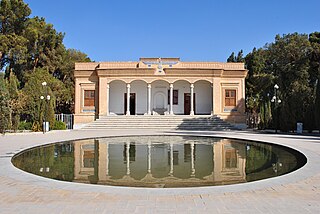
The Fire Temple of Yazd, also known as Yazd Atash Behram, is a Zoroastrian fire temple in Yazd, Yazd province, Iran. It enshrines the Atash Bahram, meaning “Victorious Fire”, dated to 470 AD. It is one of the nine Atash Bahrams, the only one of the highest grade fire in ancient Iran where Zoroastrians have practiced their religion since 400 BC; the other eight Atash Bahrams are in India. According to Aga Rustam Noshiravan Belivani, of Sharifabad, the Anjuman-i Nasiri opened the Yazd Atash Behram in the 1960s to non-Zoroastrian visitors.
The role of women in the Zoroastrian and Parsi communities remains controversial and significant. Gender roles in the community have slowly been evolving as societal norms around them progress.
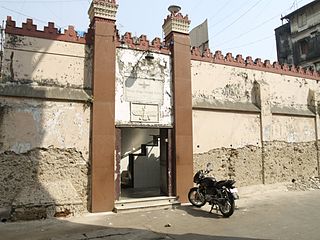
Banaji Limji Agiary is the oldest Zoroastrian fire temple in Mumbai, India that was constructed in 1709. The fire was consecrated here by the Parsi businessman Seth Banaji Limji. The temple has a fortress-like structure and non-Parsis are not allowed to enter, as in all Zoroastrian temples. The temple is a Grade II heritage structure. Situated less than a kilometre away from the temple, Maneckji Seth Agiary (1733) is the second-oldest fire temple in Mumbai.

Sharifabad, Ardakan is a township in the Central District of Ardakan County, Yazd Province, Iran. It is located near the county capital, Ardakan, and had a population of 4,000 as of the 2006 census. Sharifabad is one of the Zoroastrian centres of Iran, home to numerous Zoroastrian holy sites. Every summer, thousands of Zoroastrians from around the world gather here on pilgrimage. Sharifabad is also notable for the 1,000-year-old Qutbabad aqueduct that runs through the village. The village is home to both Muslims and Zoroastrians who worship separately and respect each other's beliefs.

















